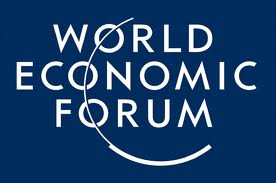 Greater regional integration, a single visa and across-the-board standards in the tourism sector are expected to boost trade in ASEAN by 10%-20%
Greater regional integration, a single visa and across-the-board standards in the tourism sector are expected to boost trade in ASEAN by 10%-20%- Myanmar says it is committed to boosting intra-regional trade with a common visa for ASEAN nationals to be made available in 2014
- The travel and tourism sector offers a transitioning Myanmar an important opportunity to create jobs and boost employability, but needs to formulate its branding and sustainability strategies
Nay Pyi Taw, Myanmar, 7 June 2013 – Home to places of stunning natural beauty, unique historical sites and rich cultural traditions, East Asia has long piqued the interest of travellers. Now, with tourism ministers ready to facilitate the ease of travel within the region, its draw cards are set to ignite the imagination of travellers even more.
Tourism ministers from the Association of Southeast Asian Nations (ASEAN) say they are committed to implementing tourism standards for the region and a common regional visa to ease travel and boost tourism sector growth by up to 20%.
“We are trying to promote ASEAN as a destination by including two to three stops in one package,” Mari Elka Pangestu, Minister of Tourism and Creative Economy of Indonesia, told World Economic Forum participants in Myanmar today. “We also want to make a common ASEAN visa, see greater mobility of people and have open skies,” she said.
The Indonesian minister said that with greater integration and standardization, the region’s tourism sector is expected to grow 10%-20% over the coming years.
This week, ASEAN ministers signed a letter of intent on Smart Tourism that is targeting the introduction of electronic visas and engaging third parties to make travel processes more efficient. In the near future, travellers in ASEAN will be able to apply for a common ASEAN visa, perhaps with the cost of the visa included in their airline tickets.
Myanmar has also expressed support for a regional and intra-regional trade shift, this week committing to allowing all ASEAN nationals to visit the country without a prior visa by as early as next year.
Across the region, the tourism and travel sector directly provides jobs for more than 9 million people and generates 5% of ASEAN’s GDP. In the midst of an economic metamorphosis, the tourism sector is playing an important role in boosting Myanmar’s urban and rural economies.
“Last year Myanmar received 1.06 million visitors. This year, we have been receiving visitors with a growth of 40%, but we want to get more,” noted Htay Aung, Union Minister of Hotels and Tourism of Myanmar.
But rather than race to accommodate an influx of visitors, Htay Aung said he is setting his sights on establishing a sustainable tourism market. “We are in the age of infancy and are not educated in tourism. That’s why the first thing I did was draft the responsible tourism policy,” he explained, “We intend to use tourism to help Myanmar people get a better life.”
Discussing a recent initiative to establish a sustainable coral farm in the Philippines, Ramon R. Jimenez Jr, Secretary of Tourism of the Philippines, noted that ASEAN’s reputation for generous hospitality does not automatically translate into successful tourism.
“If you begin with inclusiveness you end with it. With all our great history of hospitality, we must create jobs and opportunities and very boldly and loudly say this is not going to destroy our islands and natural beauty,” he said.
Anthony F. Fernandes, Group Chief Executive Officer, AirAsia, Malaysia, a Co-Chair of the World Economic Forum on East Asia, said that Myanmar must consider how it wants to market its unique destinations, pointing out that, with the availability of low-cost travel, young people are the drivers of growth in ASEAN’s tourism sector.
“Myanmar has a wonderful product and it’s good to have a product,” said Fernandes, “but they have to tell the world.”
Over 1,000 participants from 55 countries are taking part in the World Economic Forum on East Asia, held for the first time in Nay Pyi Taw, Myanmar. The meeting welcomes over 100 public figures representing 15 countries, including heads of state or government from Laos, Myanmar, the Philippines and Vietnam. More than 550 business leaders, over 60 Global Growth Companies and nearly 300 young leaders from the Forum’s Young Global Leaders and Global Shapers communities, together with other members of civil society, academia and media are convening to discuss the challenges and opportunities facing Myanmar and East Asia today.
The Co-Chairs of the World Economic Forum on East Asia are: Helen E. Clark, Administrator, United Nations Development Programme (UNDP), New York; Anthony F. Fernandes, Group Chief Executive Officer, AirAsia, Malaysia; Yorihiko Kojima, Chairman of the Board, Mitsubishi Corporation, Japan; Indra Nooyi, Chairman and Chief Executive Officer, PepsiCo, USA;Subramanian Ramadorai, Vice-Chairman, Tata Consultancy Services, India; and John Rice,Vice-Chairman, GE, Hong Kong SAR.
Sky Net is the host broadcaster of the 2013 World Economic Forum on East Asia.
